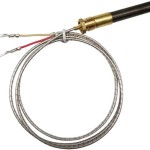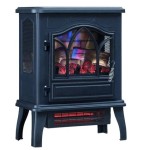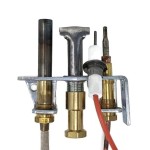Gas Fireplace Paint: A Guide to Choosing the Right Finish
Gas fireplaces are a popular addition to many homes, offering warmth, ambiance, and a focal point for the living space. However, the traditional look of a gas fireplace may not always align with the desired aesthetic of the room. Fortunately, painting a gas fireplace offers a simple and effective way to refresh its appearance and seamlessly integrate it into the overall design scheme. This article will delve into the considerations for choosing the right paint for your gas fireplace.
Understanding Fireplace Materials
Gas fireplaces are typically constructed with materials that require specific painting considerations. Common materials include:
- Brick: Brick is a porous material that readily absorbs paint, necessitating a primer to ensure proper adhesion and prevent uneven color absorption.
- Stone: Stone, like brick, can be porous and may require priming. However, it often features a more textured surface, which can present unique challenges for painting.
- Concrete: Concrete is a smooth and non-porous material, making it relatively easy to paint. However, it may need a sealant to protect the paint from moisture and heat damage.
- Metal: Metal fireplace surrounds often require specialized paint designed to resist high temperatures and prevent rust.
Before starting any painting project, it is essential to identify the specific material of your fireplace surround to choose the appropriate paint and preparation methods.
Factors to Consider When Choosing Gas Fireplace Paint
Selecting the right paint for your gas fireplace requires considering several factors to ensure its longevity, safety, and aesthetic appeal:
1. Heat Resistance
Gas fireplaces generate significant heat that can damage paint if it lacks sufficient heat resistance. High-temperature paint formulations are specifically designed to withstand the elevated temperatures of gas fireplaces. Look for paints labeled "heat-resistant," "high-temperature," or "fireplace paint," and check the manufacturer's specifications for the maximum temperature rating. Consider the proximity of the paint to the firebox and the intensity of the heat generated by your fireplace.
2. Moisture Resistance
Gas fireplaces can create condensation due to the combustion process and the heat generated. Choose a paint with excellent moisture resistance to prevent peeling, blistering, and mildew growth. Look for paints labeled "moisture-resistant" or "damp-proof," and consider applying a sealant to further enhance protection.
3. Color and Finish
The color and finish of the paint will significantly impact the overall aesthetic of your fireplace. Consider the existing design of the room and your desired style. For a modern look, consider sleek, monochromatic colors and matte finishes. For a more traditional feel, you might choose warm, earthy tones and glossy finishes.
Remember that color can affect the perception of the space. Darker colors can make a room feel smaller and cozier, while lighter colors can create a sense of spaciousness. Experiment with paint samples on a small area of the fireplace before committing to a full coat.
4. Safety
Safety is paramount when painting a gas fireplace. Ensure the paint you choose is non-toxic and fire-retardant to minimize potential risks. Avoid using spray paints near an open flame, and always follow the manufacturer's instructions for proper application and drying time.
Preparation and Application
Before painting your gas fireplace, it is crucial to properly prepare the surface to ensure optimal adhesion and a professional-looking finish. This involves:
- Cleaning: Thoroughly clean the fireplace surround with a mild detergent and water to remove dirt, grime, and dust. Allow it to dry completely.
- Repairing: Patch any cracks or holes with a suitable filler and sand the surface smooth.
- Priming: Apply a primer specifically designed for the type of material you are painting. This will create a bond between the paint and the surface, ensuring a smooth, even finish. Allow the primer to dry completely before applying the paint.
When applying paint, use a high-quality brush or roller designed for the specific type of paint. Apply thin coats of paint, allowing each coat to dry completely before applying the next. Avoid using too much paint, as this can cause drips and uneven coverage. For optimal results, consider using a painter's masking tape to protect surrounding areas from accidental paint splatters.
By carefully considering these factors and following the appropriate preparation and application techniques, you can transform your gas fireplace into a stunning focal point that enhances the beauty and ambiance of your living space.

Fireplace Makeover Spray Paint Magic

Fireplace Makeover Spray Paint Magic

How To Make Over A Brick Fireplace Quickly Easily And Ly Pinkscharming

Fireplace Makeover Spray Paint Magic

Diy Fireplace Makeover With High Heat Paint Jessica Welling Interiors

How To Spray Paint The Fireplace Surround My Homier Home

Painted Marble Fireplace Surround Two Years Later Simply2moms

Painting Your Fireplace Surround

Gorgeous Diy Fireplace Makeover 3 Reasons To Paint Your Black Lehman Lane

How To Spray Paint Fireplace Interior The Diy Playbook
Related Posts








